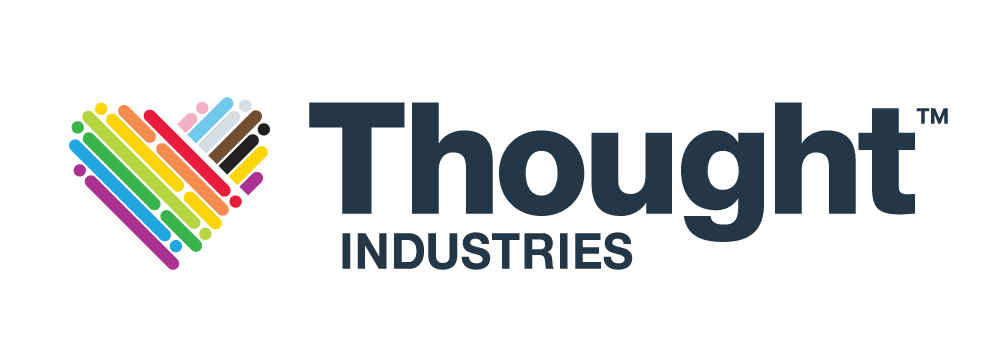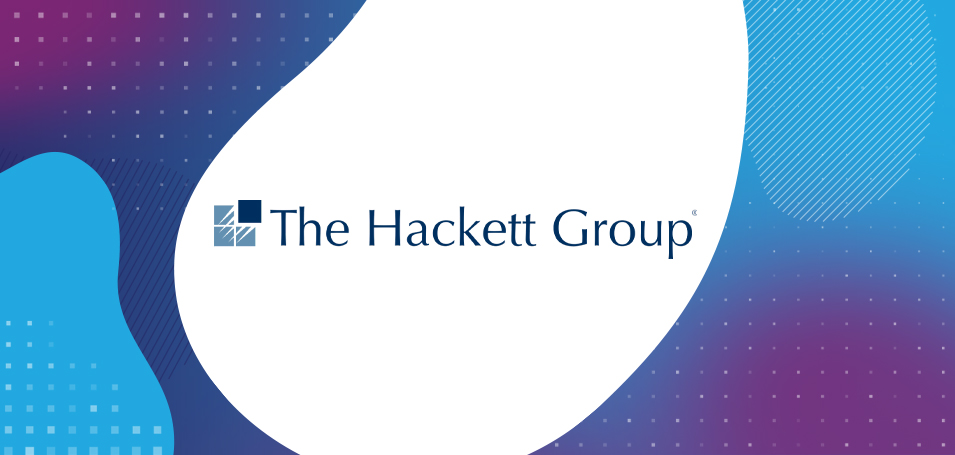I was recently asked to join Ryan Dillon as a guest on Hot Takes – alongside Thought Industries CEO Barry Kelly — where I was asked to share my most contentious opinions and spicy thoughts about training and learning.
During this recap, I’ll open up further about how to be more successful when pitching for digital transformation, and share my thoughts on “quick wins” vs long-term profit gains. I even shared the name of my own training industry hot sauce — Skills Wow! (You’ll have to check out the full episode to learn why.)
Hot Take #1: The Vast Majority of Digital Transformations Fail
- When you’re looking to gain adoption for new technology, remember that the vast majority fail.
- Focus on the why, so that you can explain the value to the C-suite.
- Your CEO is already juggling dozens of tools, so you need to be able to explain internal and external value.
- People need to feel transformation is being driven by them, not happening to them.
Ryan started off by asking me, “what’s the best way to gain advocacy or attention to make a technology change?”
Your chief executive already has a large tech stack, which is likely to be a bolt on, on top of a bolt on, ad infinitum, and the organization has dozens of manual processes that they are working with. If you’re going to come to your CEO with another technology suggestion, you need to be able to explain clearly how it’s going to fit into the overall tech stack, and how it’s going to work internally as well as help the customer.
Digital transformation involves a huge amount of change management. If teams or stakeholders feel that digital transformation is happening to them, rather than being driven by them, the project is likely to fail. To improve the likelihood of success, connect the rationale for the technology with the purpose of the organization. When people see how their roles and the digital transformation connects with the overall vision, navigating change becomes more palatable.
Hot Take #2: Almost All of the Time, Emotion Gets in the Way
- When you’re making a pitch for digital transformation, enter the conversation with a clear head.
- When the pitcher is emotionally invested, this more often than not gets in the way.
- You’ll do a better job focusing on the “why” and the customer need.
- Make sure that you’re ready to hear a no, and won’t be hurt by that answer — it shouldn’t be personal!
When I see that the stakeholder who comes to me with the idea is already deeply emotionally invested in their pitch, this can more often than not get in the way. You’ll do a much better job if you can leave emotion at the door, and come in with a clear head that focuses on the why, and explains the customer need.
Hot Take #3: Leaders who Ignore Change Management Do So At Their Own Peril
- The #1 reason transformation takes longer than expected is navigating change management.
- People have a deep emotional connection to the way they do things.
- Your plan for change needs to include understanding your people.
- Start preparing people as early as possible for change.
If you have a home-grown solution, or a technology stack which involves many bolt-on solutions, transformation can come with a lot of challenges for a business, many of which also come from emotion.
Someone, or perhaps a team of someones, has sweated or bled over this home-grown solution. There is a deep personal connection to the technology. That’s why, when you’re looking at any transformation, digital or otherwise — you need to have a plan for change.
For most people, changing from home-grown systems is rough! It can take a long time to navigate through the change management process. People do not simply flip a switch and say “Okay, today I’m going to work differently.” Start preparing your people as early as possible for change, and recognize that the reason transformations take much longer than anticipated is primarily the navigation through myriad change management curves across the business.
Hot Take #4: Transparency is Key in an M&A
- It’s a journey to integrate teams, processes and technology post-acquisition or merger.
- Once you can be transparent, share information widely. If you don’t communicate, your people will make up their own narratives.
- A formal roadmap can help show your people “This is where we are, and where we’re going”
- Try not to do everything at once. Work out what’s critical, and what can happen organically.
One of the biggest changes an organization can go through is a merger or an acquisition. Ryan asked me to give a brief answer to how a business goes about integrations with teams, processes and technology post acquisition.
At first there may be a veil of secrecy over the acquisition, but once this has dropped, you should share information widely. Everyone is moving through change management processes together, but at different speeds and cadences, and communication helps.
You can reduce the watercooler scuttlebutt, narratives that ultimately negatively impact the org, by sharing a formal roadmap that explains how goals, roles and responsibilities are aligned. During project implementation, a road map allows leaders to be transparent and say, “This was our plan, and this is where we are now on the journey — right here.” Remember that humans are not coin-operated machines! They may have attachments to people, tools, or processes that are changing in front of their eyes, and this needs to be considered as part of the roadmap.
Next, don’t look to boil the ocean. I’ve seen time and time again people convince themselves that certain tasks have to be done by a specific timeline. A good example is changing email addresses. Why does this need to be done right away? If it’s a practical, regulatory or legal reason — then sure, that needs to be given priority. But if it’s just the ego of the CEO, who may want everyone to be communicating on the same brand, let it wait until more pressing integration items are complete.
There are many similar processes that can be considered in the same way, allowing you to pick upfront what’s critical, focus on those first, and then cadence things out as organically as possible.
Hot Take #5: There Are No Quick Wins in Maximizing Profitability
- What looks like a quick win can damage your business further down the line.
- Instead, create a mindset of reducing waste, treating your people as your greatest asset, and having a maniacal focus on the customer.
- Rather than quick wins, look for experienced partners and robust technology that can walk you through complex transformation initiatives.
When people look for “quick wins” in boosting profitability, this can end up like a yo-yo diet. Short-term measures to improve profitability often have long-term negative consequences. Deep cuts in one area of the business can put undue strain on other functional areas who need to pick up the slack. The customer almost always loses.
As well as identifying and minimizing waste, other best practices are to view people as the most valuable asset in your business, and to have a maniacal focus on the customer. By defining the value streams that exist within your business, you can then ask your people (your most valuable asset) to think about how they are adding value at each moment throughout their day, to create “Yahoo!” moments for the customer.
Narrowing in on learning technologies specifically, Ryan and I finished our discussion with a conversation around the need in the market for a Headless LMS, which is the perfect tool for handling the complexities of transformation, such as bringing two learning businesses together. At the moment, highly bespoke technical environments are often knitted together in the short term with duct tape, glue sticks and construction paper. This can lead to technical debt that becomes a large anchor weighing everyone down. Again, ultimately this negatively impacts the customer.
A headless LMS provider can guide you through digital transformation, not with quick fixes or magical cures, but by helping you navigate the inevitable minefields you’ll encounter with the right technology and support.
Dr. Andrew Temte, CFA, is the former CEO of Kaplan Professional, author of Balancing Act: Teach, Coach, Mentor, Inspire, and host of The Balancing Act Podcast. A thought leader on issues related to organizational health, continuous improvement, and corporate learning, his articles have appeared in a number of media outlets including Chief Executive and Chief Learning Officer.
During his 22+ year tenure at Kaplan, Dr. Temte also served as Interim President of Mount Washington College, and President of the Kaplan University College of Business and Technology. This blend of higher education and professional education experience gives Dr. Temte a unique perspective over the issues surrounding the future of employment and workplace relevance. Dr. Temte earned his doctorate in finance from the University of Iowa with a concentration in international finance and investment theory. He holds the CFA designation and has over 14 years of university teaching experience.
An accomplished musician and leader of the rock band, The Remainders, he spends much of his free time “Rock’n Out and Doin’ Good.”




